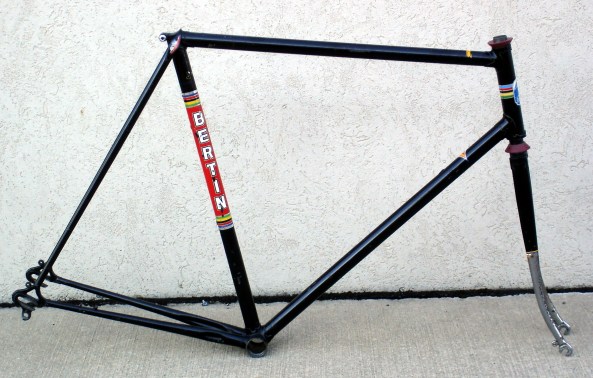 On March 5th, 2015 I wrote a review of the full Mafac rubber lever hoods available from Jordi at Reciclone in Spain. At that time, Jordi did not make reproductions of the rubber-covered adjusters as he had no
On March 5th, 2015 I wrote a review of the full Mafac rubber lever hoods available from Jordi at Reciclone in Spain. At that time, Jordi did not make reproductions of the rubber-covered adjusters as he had no  adjuster in good enough condition to serve as a master from which to take a mold. Subsequently, after conversations with Jordi, I wrote, “Jordi is currently evaluating the practicality of making matching adjuster rubbers which would need to be added to the owners’ own adjuster body.”
adjuster in good enough condition to serve as a master from which to take a mold. Subsequently, after conversations with Jordi, I wrote, “Jordi is currently evaluating the practicality of making matching adjuster rubbers which would need to be added to the owners’ own adjuster body.”
To assist him, I mailed him a NOS rubber adjuster and a matching metal adjuster mechanism. After repeated attempts, he was finally able to come up with a satisfactory reproduction. He then emailed me and let me know that a complimentary set was on its way to me as a thank you for the use of my original which he had mastered for his mold. When the box arrived, it contained my original adjuster cover and mechanism plus a finished adjuster cover set and an example of the prototype moldings.
This whole project arose out of the difficulty involved in getting Mafac branded hood covers for restorations and, to a lesser extend, for everyday use. This was a particular problem for Jordi as Reciclone does bike restorations as well as sales of period spares and accessories for vintage bikes. Typically, the gum rubber hoods and adjusters dry in the sunlight, harden and begin to  crack and then crumble. (See the red circled area in photo.) The left hand adjuster in the photo is Jordi’s reproduction. One solution is to simply delete the adjuster. Another is to switch to the period correct alternative of the knurled metal adjusters or the metal adjusters with rubber O rings (which also perish). However, if the bike had gum rubber adjusters on its Mafacs and a restoration is to be absolutely correct, then that is what must be replaced.
crack and then crumble. (See the red circled area in photo.) The left hand adjuster in the photo is Jordi’s reproduction. One solution is to simply delete the adjuster. Another is to switch to the period correct alternative of the knurled metal adjusters or the metal adjusters with rubber O rings (which also perish). However, if the bike had gum rubber adjusters on its Mafacs and a restoration is to be absolutely correct, then that is what must be replaced.
Should you find yourself in that position and go to the Reciclone page for hoods, you will not see an adjuster listed as an available product. The reason behind that is the difficulty involved in making the adjuster covers. The covers I received were cleanly molded in gum coloured rubber. They were a perfect, tight fit on the metal adjusters and accepted the chrome steel ferrules to support the brake cable end with no problem. Below is a large image to allow you to view the reproduction adjuster clearly.
One of the problems with reproduction hoods and adjusters is matching the colours of the gum moldings. In the accompanying photo below, the hood on the left is a Reciclone reproduction and the hood on the right, with an adjuster, is a NOS Mafac part that was received exactly as shown when new. Typically, Mafac adjusters and hoods did not match due to batch variations in a large-scale production environment.
In a practical sense, this means that Jordi could not guarantee that your hoods and his adjusters would match harmoniously due to the colour variability of the batches of rubber for the moldings. As well, being small parts, the adjusters are very picky to make. So, as nice as they are, the adjusters will be special order items only, not regularly offered merchandise. You will need to contact Jordi (reciclone1@gmail.com) directly at Reciclone to discuss an order and I would recommend having the hoods molded at the same time to optimize your colour match. Regardless of which route you choose, good luck with your restoration.

































